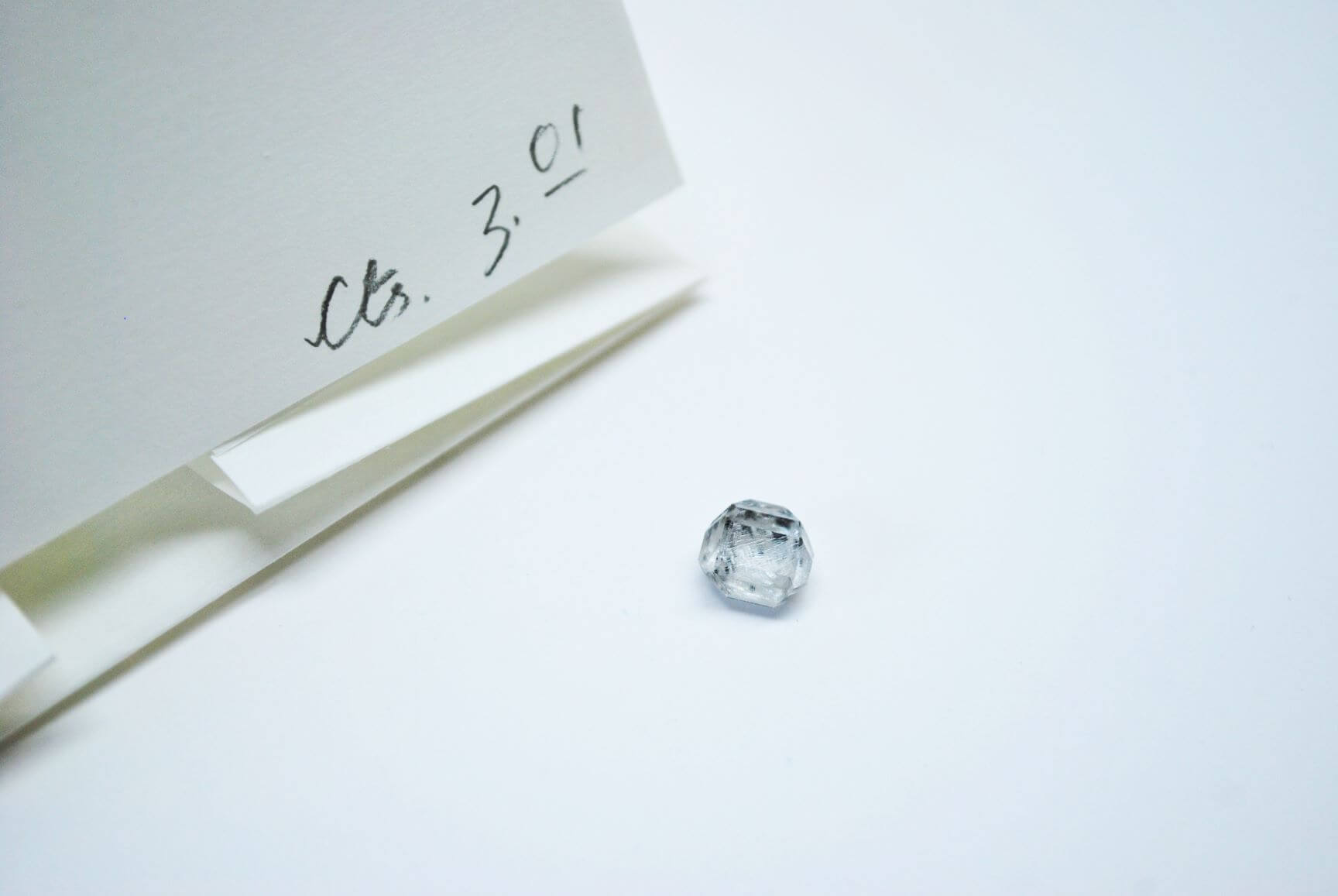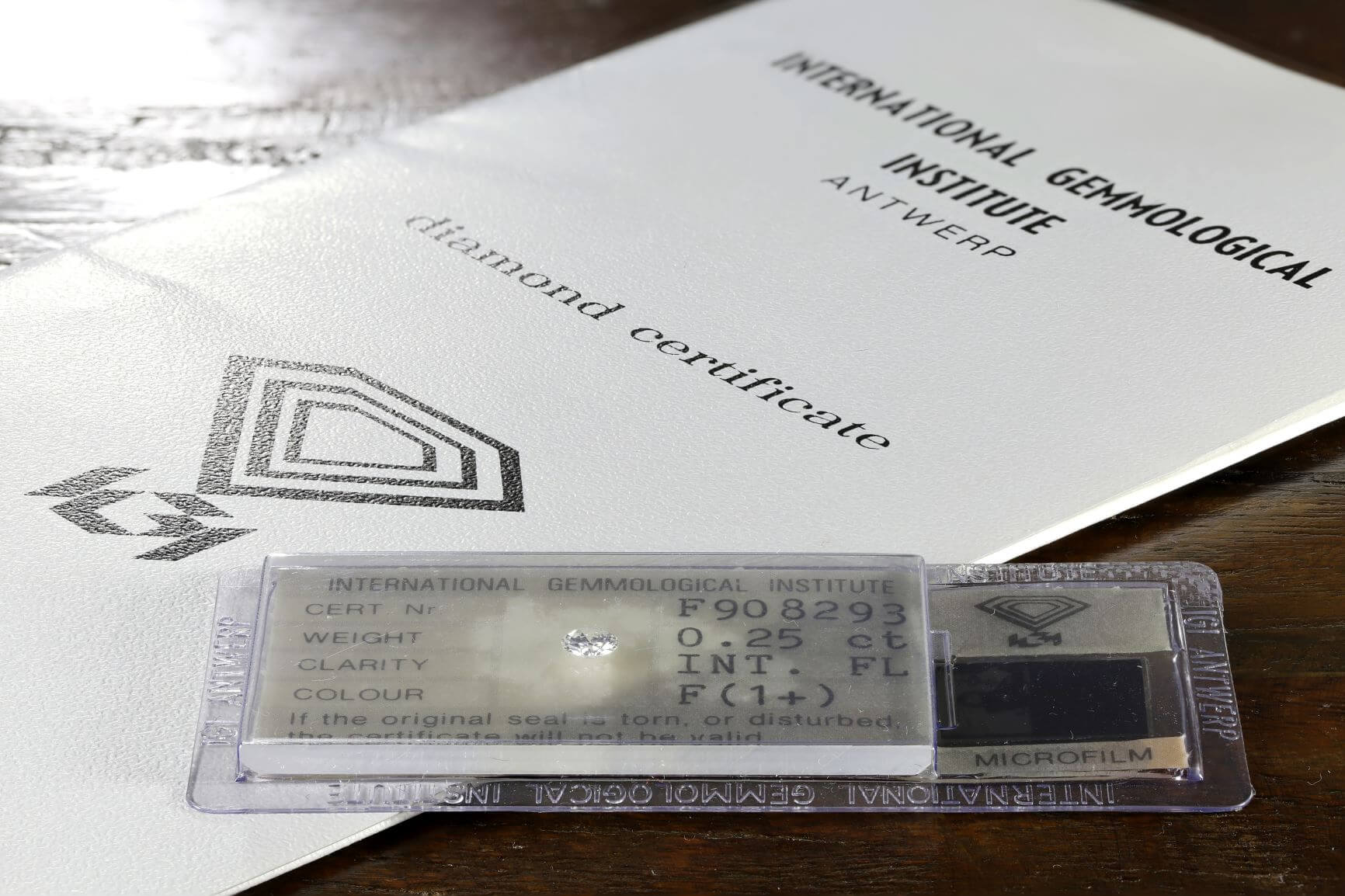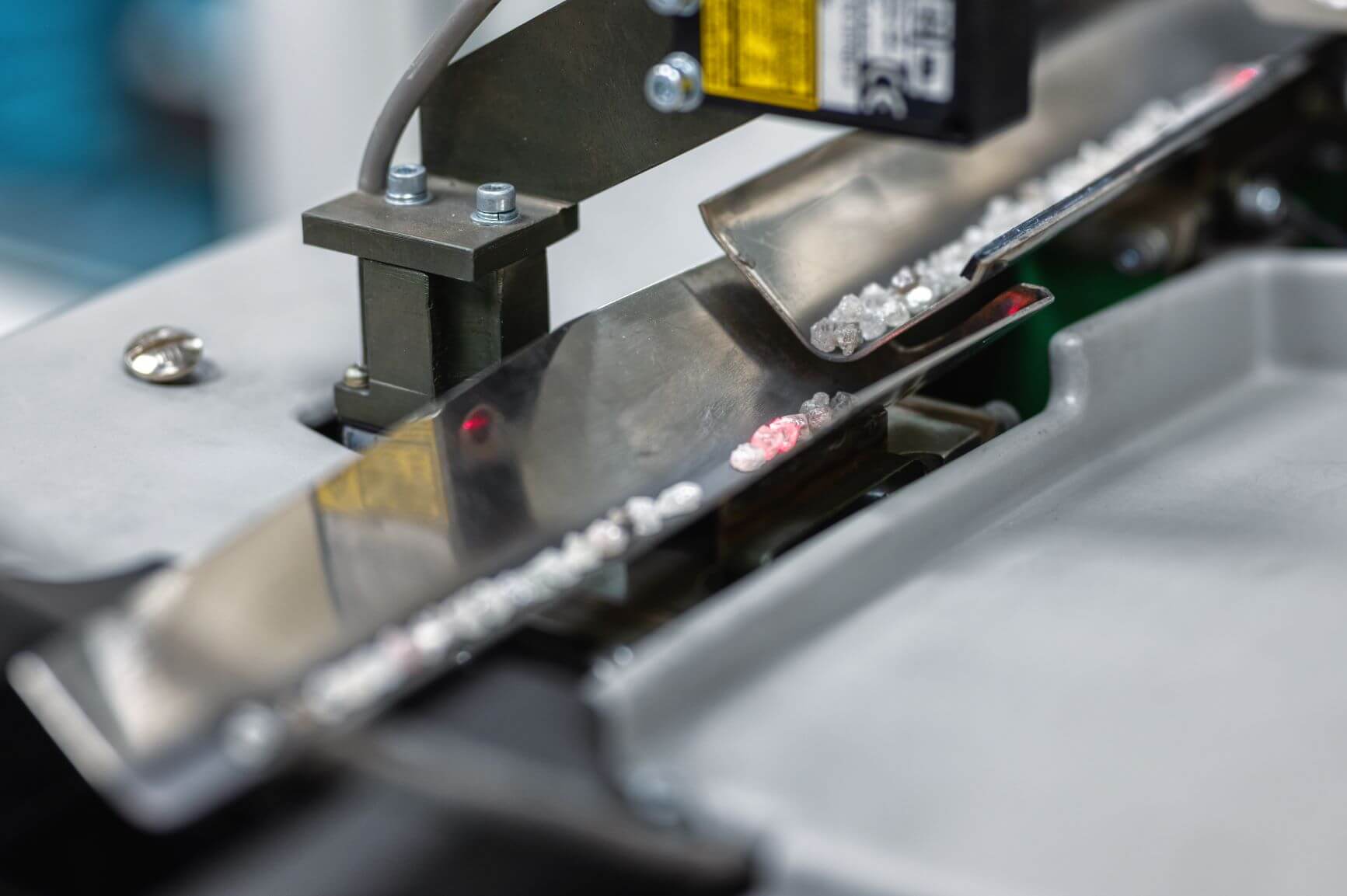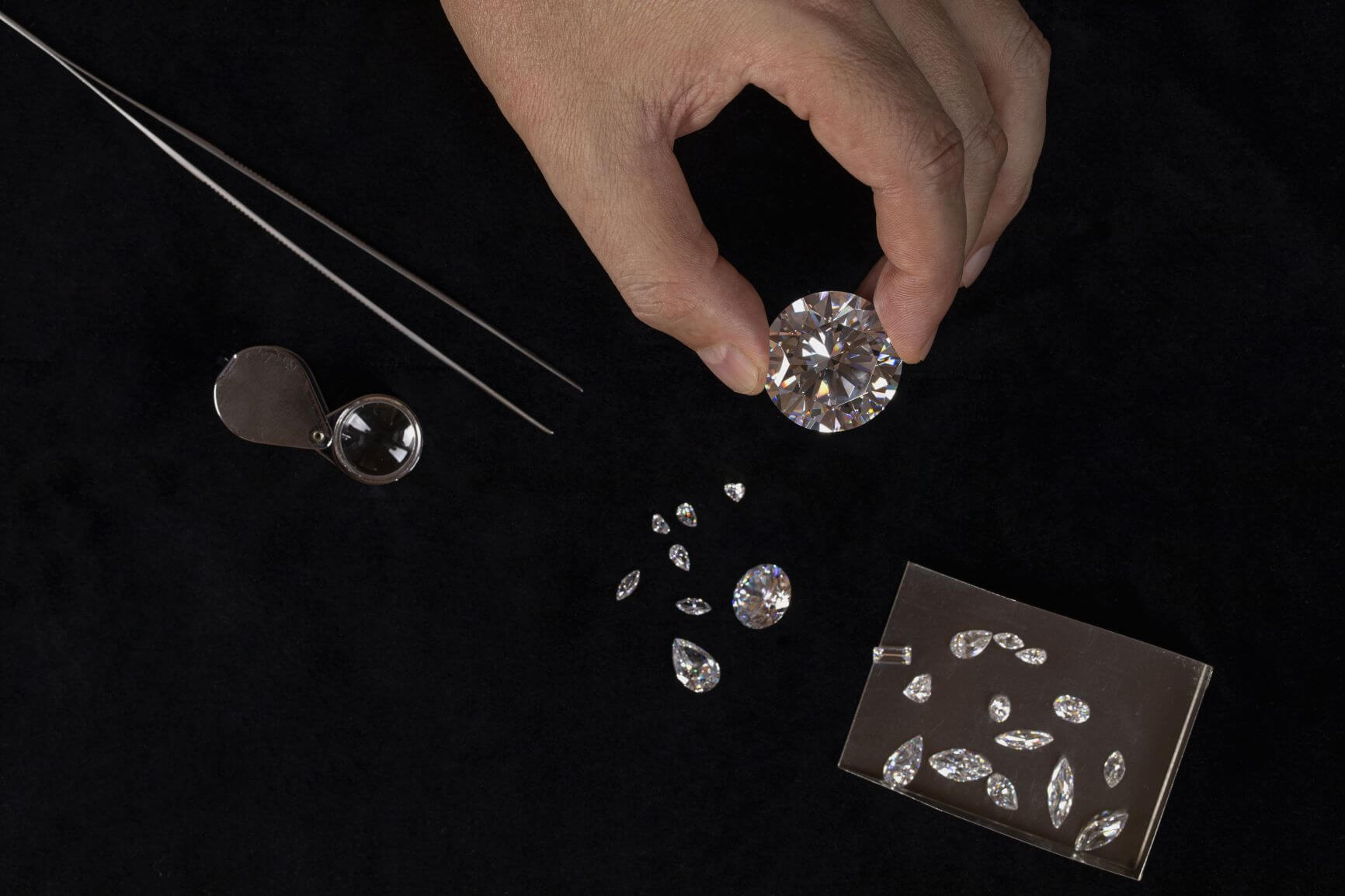Lab diamonds have a history of being shunned for their artificial nature, even though they are physically identical to anyone but an expert. But that may be changing. The gems are now getting a boost from high-profile advocates like De Beers and the American Gem Society, and Megan Markle. Synthetic diamonds are also starting to show up in more engagement rings, and they cost about 30% less than their mined alternatives.
But the big question for those picking their engagement rings is, should I be looking at lab diamonds? Are they cheaper and more sustainable? Well, they are an affordable alternative, more ethical than conflict diamonds, and are mining free.
What Are Lab Diamonds?
They are diamonds that have been created in a laboratory, but they are structurally and chemically identical to mined diamonds. They are created by placing a diamond seed (carbon) into a growth chamber where the nucleation and growth are stimulated.
The entire process is carefully controlled and monitored by a computer, it can take anywhere from weeks to months. The final product is a 100% solids diamond that is optically, physically and chemically the same as mined diamonds.
Tens of thousands of carats are produced in this way each year, and more are grown every day as more people make the change.

Clarity of Lab grown diamonds
The clarity is equally as important as the quality and cannot be manipulated by the diamond broker, unlike colour and carat. Clarity is based on natural conditions under which the diamond was originally formed, and can never be changed.
Clarity is measured on a scale from FL to IF. If a diamond is FL it will have many inclusions that are visible to the naked eye. An IF however has no inclusions visible to the naked eye.
Most diamonds, especially those that will be cut into jewellery, are FLs. If an FL diamond is good enough for a piece of jewellery you would want to buy, then chances are it will have many inclusions.
A lab diamond with an IF clarity is very desirable and hard to come by. They are perfect gems and very appealing. They have no inclusions visible on the surface and therefore do not need to be set with a prong setting.
Because they are 100% solids, lab-grown diamonds have high clarity and are very strong. In general, they are optically, physically and chemically the same as mined diamonds.
Advantages of Lab Diamonds:
1) Low Price: Lab grown diamonds typically cost 60 to 90% less than their mined counterparts. However, they are real diamonds and share all of the same characteristics of mined diamonds—including fire, scintillation and clarity.
2) Environmentally Friendly: Lab diamonds are 100% solids, so they are strong and durable. They don’t contain any dangerous or toxic substances, such as lead or nickel found in some mined diamonds. This means that they help reduce our carbon footprint while providing for people around the world.
3) Conflict-Free: Diamonds are mined in war zones where they are often used to finance civil wars and terrorism. In spite of extensive efforts by the diamond industry to control the supply chain, it is impossible to assure that consumers will not inadvertently purchase a conflict diamond.
4) Ethical: The mining process for diamonds is extremely damaging to the environment and is in direct violation of many local and international laws. The diamond industry has not developed any effective way to assure that the diamonds their consumer’s purchase are ethical.
5) Sustainable: Lab diamonds can be reproduced in a laboratory over and over again. There is no chance of depletion as there is with mined diamonds. They will never be replaced by another stone type such as cubic zirconium, moissanite or synthetic sapphires, which are designed to look like diamonds but do not share all of their properties.
6) Finer Clarity: Lab grown diamonds are available in a much finer clarity than mined diamonds. In fact, most mined diamonds have undesirable clarity characteristics that can never be improved, such as surface and internal flaws, fractures and inclusions caused by natural crystallization during formation.

Should I buy a lab grown diamond?
Lab-grown diamonds are real diamonds and possess the same physical characteristics as mined diamonds. They are optically, physically and chemically identical to natural diamonds. This means they have the same appearance, lustre, fire and scintillation that traditional diamonds have—without the problems associated with mined diamonds.
It is important to understand that all diamonds are not made the same. Lab grown diamonds and those mined in the earth are identical, but they differ greatly from diamonds created in a factory—and these differences can affect your diamond’s beauty. Here’s how:
Sterile vs. Pyrope
The best known “factory diamond” is cubic zirconium, which is pure simulated zirconium oxide with no carbon or crystal structure. By contrast, lab-grown diamonds created in the laboratory are grown from a special alloy of carbon called hydrothermal-grown synthetic (HTS) diamond. The HTS composite is so strong that it can be sintered into a single solid mass—much stronger than the crystalline structure of mined diamonds.
As a result, the HTS diamond simulants are more brilliant and have a higher reflectivity than cubic zirconium. However, they do not have the same optical characteristics as real diamonds. The synthesis process is different, so the carbon atoms in lab grown diamonds are arranged differently than natural diamonds and this makes them appear brighter and less yellow in colour.
To add to the confusion, lab-grown diamonds and HTS diamonds also have a number of natural analogues, such as silica quartz—better known as rock crystal. Rock crystal is a naturally occurring mineral that is similar to diamonds in its optical qualities and temperature characteristics. It is also non-porous and radiation-resistant.
In fact, rock crystal was used throughout history in place of natural diamond, since it was scarce (and extremely valuable) until the 1800s. Laboratory-grown rock crystal is an affordable diamond simulant that is much easier to obtain than natural diamonds.
It is important to realize that rock crystal looks nothing like a real diamond. It lacks the fire, scintillation and brilliance of natural diamonds and has a much more yellowish hue. However, it is a great option for anyone interested in buying a diamond simulant at high quality—but at a low price.
All about Absolute vs. Relative Color
When you purchase a diamond, if it is hydrogen-terminated with no colour, it is called a colourless diamond. However, colourless diamonds are extremely rare in nature and most of the diamonds mined are coloured with tinges of yellow or brown.
Colourless diamonds have been shown to have little or no impact on the price of a diamond. Colour is what makes a diamond unique and beautiful—which means that the actual colour grade is about as important as its cut or clarity. Colour has nothing to do with a diamond’s price—however, diamonds with very little colour do cost more, since it takes more work to create them.
In order to understand the differences between diamond simulants and natural diamonds, you must learn all about colour grades. Not all colourless diamonds are created equal, but a G-H graded diamond has a nice balance of brightness and sparkle with an acceptable level of colour saturation. This is what most consumers consider to be “colourless” and it is what most jewellers recommend as the best choice.

What are the differences between a lab grown diamond and a natural diamond?
Lab-created diamonds make up 5% of the total market for gem-quality diamonds. The other 95% are mined from the Earth, but recently, the rise in popularity of these lab-created diamonds has changed that statistic.
There is a variety of different terms used to describe lab-grown diamonds. These terms include: synthetic, laboratory-created, cultured and laser crystallized. The term synthetic is typically used to describe artificial gemstones and cultured is typically used to describe textures.
Laser crystallized diamonds are a type of synthetic diamond that is created to look like natural diamonds. These types of diamonds are not commonly used in jewellery, but rather, used for industrial purposes.
Laboratory grown diamonds are created through the use of a machine that is designed to re-create natural diamond growth conditions in a lab. The process begins by placing a tiny diamond seed in the growth chamber of an industrial-sized machine that uses 4 different gases to form the carbon atoms into crystals.
As the first layer of diamond crystals grows, the machine then removes it from the chamber and takes a scan of what has been created. The machine then uses this data as a reference to tell it how to grow the next layer, and so on. This process can take anywhere from 3 weeks to 6 months.
The main argument against lab created diamonds is that they are not real diamonds. They are not created in the same way that naturally formed diamonds are and therefore, do not have the same value. The value of a naturally found diamond is typically determined by its rarity, location of discovery and “4 C’s”: cut, clarity, colour and carat.
Once the machine has finished growing the diamond crystals into a full-sized rough diamond, it is cut into gemstones. The most commonly purchased sized lab-grown diamonds range from one carat to two carats in size. The machine will determine the best way to cut the rough diamond so that the largest possible number of gemstones can be created with it.
This is done by taking a scan of the rough and then using software to map out the outline of a perfect cut diamond. The machine then cuts the rough into a grid of tiny diamonds, most commonly referred to as chips. These chips are then placed on a lathe and polished by hand until they are perfectly round. The final step is to polish the rough diamond to give it a crystal coating. The coating is typically 50 to 100 nanometers thick and gives the diamond its brilliance and shine.
Lab-grown diamonds are available in most of the same colours that natural diamonds come in, including colourless, white, blue, pink, yellow or green. The only difference between lab grown and natural diamonds is that they are not created by nature or time.
Will my jeweller be able to tell the difference?
There are a few different ways to tell the difference between a natural and artificial diamond, but your jeweller will be able to do so. If you are considering a lab created diamond, you should be aware that not all jewellers will have experience with them. Your best bet is to find a specialist jeweller or independent gemological labs.
Another way to tell if your diamond is laboratory grown, is to check the inclusions under magnification. Natural diamonds have several different types of inclusions including a growth line, feather, crystal and cloud.
Since lab-grown diamonds are created in a laboratory without high pressure, they are usually polished to remove all traces of these inclusions. Lab grown diamonds that have been treated this way will look very similar to natural diamonds under magnification.
The third way is by comparing the clarity of the diamond to that of a natural diamond. Laboratory grown diamonds typically have fewer inclusions than natural diamonds and therefore appear more perfect.
A fourth way to tell if your diamond is lab-grown, is with a thermal conductivity detector. This device uses infrared light to conduct a temperature difference test. The temperature of lab grown diamonds will be slightly lower than that of a natural diamond and can be used as one method to determine the difference between the two types of gems.
A fifth method is by using a refractometer. This instrument measures the refractive index of the stone, which is often slightly lower in lab-grown diamonds.
A sixth method is by using a spectrophotometer. The instrument will give you the density of the diamond, which can be used to indicate it’s the natural origin or not.
The seventh method is by using an X-ray fluorescence analyzer. This device will let you know whether an element is present in the diamond. If a non-natural element is present, then it is likely that the stone was created in a lab environment.
An eighth method is by testing the thermal conductivity. Lab created diamonds are not as durable as natural diamonds. When heated, lab grown diamonds have a thermal conductivity similar to graphite, which is the lowest of all minerals. Natural diamonds will have a thermal conductivity closer to that of gold.
Conclusion
You should expect some strides in the lab-grown diamond sector in the next five years. The hope once was that these diamonds would revolutionize the industry. They didn’t, but they’re still extremely important. The biggest hurdle is marketing, which will get a boost once a major diamond retailer starts selling them with engagement rings.



